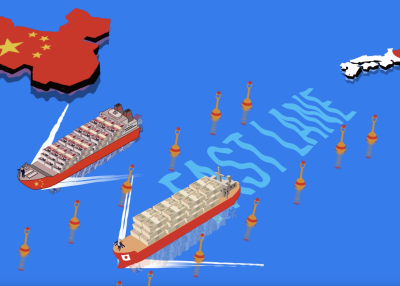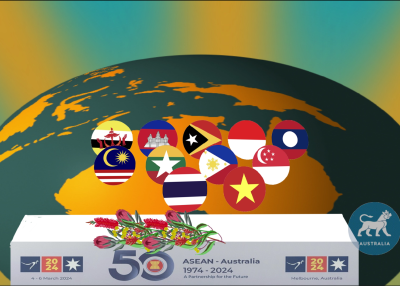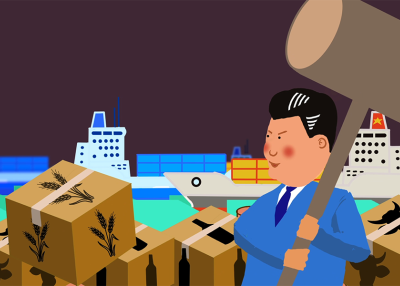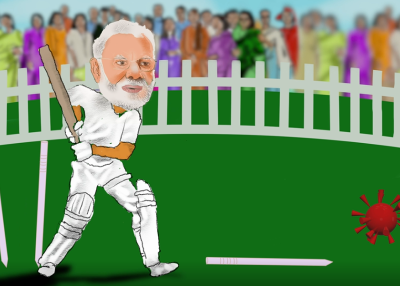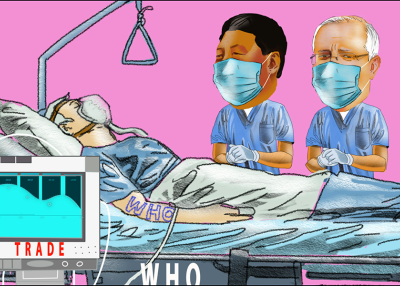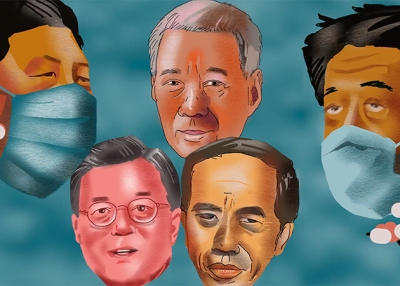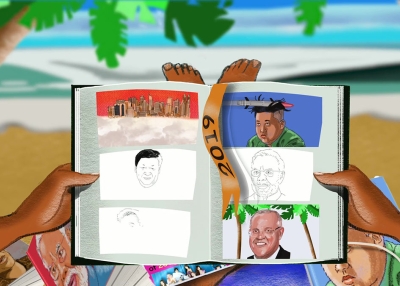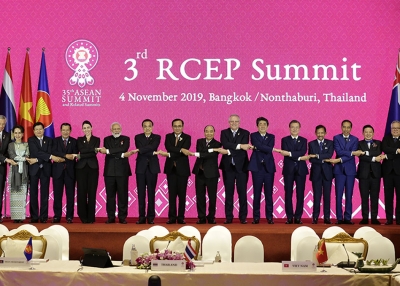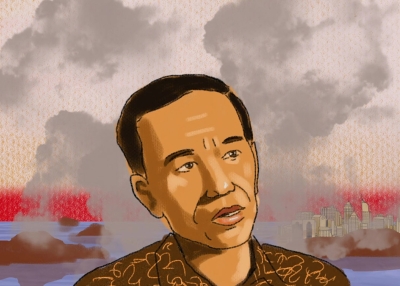Briefing MONTHLY #18 | June 2019
Women in Asia | Trade wars | BRI: good for thinktanks
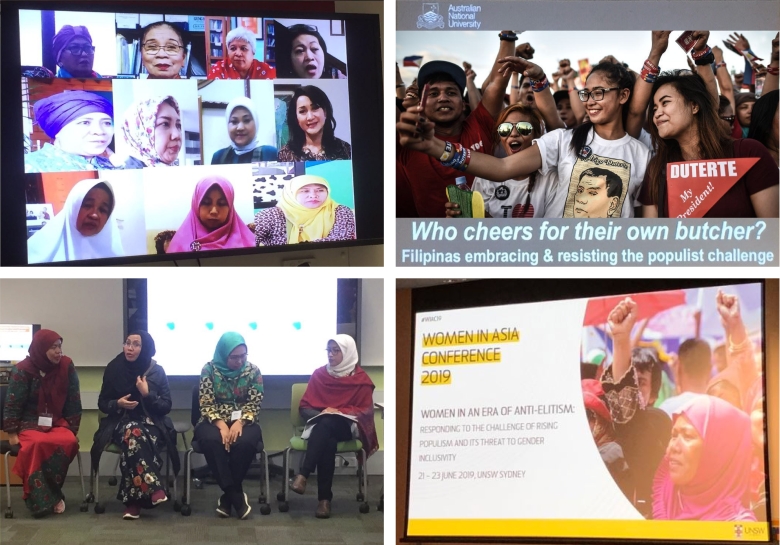
Women in Asia Conference 2019
ASIAN WOMEN AND POPULISM
This year’s Indonesian election presented women’s rights activists with a difficult choice over how to characterise their role in modern politics. Both presidential campaign teams embraced a descriptive term, emak-emak, which was seen by some to patronise women as married housewives rather than treat them as serious political actors. As a result, some more independent-minded women have shifted back to using an older term ibu bangsa (mother of the nation) to refer to themselves, even though this term is usually seen to embrace women from the establishment rather than broader society. Political scientist Kurniawati Dewi’s dissection of this debate over how women can play a greater role in Indonesian public life was one of the highlights of the Women in Asia conference at the University of NSW, where it was first held in 1981. This year’s conference, in part, reflected Asia’s year of elections by looking at how the rise of populist politics impacts on gender equity in places like Indonesia, the Philippines and India. It had speakers from 14 Asian countries and 30 universities. UNSW associate law professor and conference co-organiser Melissa Crouch says the event tried to shift the discussion about pluralism from the usual anti-establishment focus to its broader anti-pluralist consequences and how that can exclude women from public life. “Populism poses a threat to rule of law, a threat to inclusivity and pluralism, and a threat to social and economic equality,” she says.
Out of the house in Indonesia: While many Indonesian feminists don’t like the shift in the way women are being viewed in the new Indonesian political lexicon as married housewives, Kurniawati Dewi says it is better to be having such a debate than for women to be even more marginalised in public discussion. “Women are now seen as active in politics as either ibu bangsa or emak-emak – they are no longer just domesticated,” she says.
Lawyering up in the Philippines: Filipino lawyer Michael Tiu provided an interesting insight into how Philippines president Rodrigo Duterte is increasing his voter support despite a series of nasty verbal assaults on prominent female political opponents. He says that while Duterte is seen as crude by foreigners, in the Philippines he is seen more as the “dominant archetype of a Filipino male lawyer.” Tiu says Duterte quite carefully uses the language and tactics of adversarial lawyers in a courtroom to attack female opponents and this appears to resonate with voters used to the dominant role of men in the country’s legal profession. “Many of his critics are women lawyers and he sees them as attacking his masculinity,” Tiu says of Duterte’s strategy to undermine otherwise articulate female critics.
Marrying Japan style: When Etsuko Toyoda turned her academic research interest to the difficulty Japanese women have retaining their surname after marriage (known as fufu bessei), she had a dilemma. It took her two years to persuade her husband to let her revert to her original name. Toyoda, of Melbourne University, told the conference that while Japanese women can legally retain their name, they are facing increasingly strident attacks from conservative nationalists for contributing to the collapse of traditional society. “Nationalists have created an image of fufu bessei supporters as extreme individuals, but my research shows they are actually people who have experienced some form of inequality or violence,” she says. “This problem is complicated because it is seen as part of feminism and feminists have a reputation as radical people not ordinary people like us.” Toyoda says Japanese conservatives were conducting a clever campaign against fufu bessei by arguing that Japan was fairer to women than China and South Korea where they were often not allowed to assume their husband’s name.
NEIGHBOURHOOD WATCH
SUMMIT SEASON
Friends and allies: Indian Prime Minister Narendra Modi shows what summits are all about.
Prime Minister Scott Morrison got his showdown with Facebook, President Donald Trump once again perplexed his allies with the suggestion Chinese company Huawei may be back in favour and Russian President Vladimir Putin made a splash with his prediction liberalism was dead. Group of 20 summits are becoming better remembered for the antics of some leaders than global cooperation. At face value the agreement between the US and China to continue negotiating their trade differences gave the summit a success. But it really only underlined how the unilateral interests of key powers are overpowering cooperative burden sharing to maintain global growth in troubled times which was the original purpose of the event.
- Shiro Armstrong, at East Asia Forum, says this summit may well be remembered as the moment the rules-based order was lost.
- But Rory Medcalf, at the National Security College, says a Morrison foreign policy has emerged from the week’s events.
Behind the US-China rivalry around the summit, some other interesting tensions got less attention.
JAPAN v US: Japan was the well organised host nation for a summit which provided US President Donald Trump with a pathway to meetings with Chinese President Xi Jinping and North Korean leader Kim Jong-un. And Japanese Prime Minister Shinzo Abe has spent more time eating hamburgers and playing golf with Trump than most leaders. So Japanese strategic planners would have been dismayed to see the US president once again trash talk his north Asian alliance partner’s commitment to mutual defence on the sidelines of the G20. “If Japan is attacked, we will fight World War III. We will go in and protect them with our lives and with our treasure . . . but if we are attacked, Japan doesn’t have to help us at all. They can watch on a Sony television,” he said in an interview before arriving in Osaka. This is part of a pattern of criticising Japan at inopportune times which can only make Japanese strategic planners think about nuclear weapons and a better relationship with China.
KOREA v JAPAN: This is one of the most under-reported uneasy relationships in the western alliance world and it's only getting more uneasy as South Korea pursues closer relations with the North without much reference to Japan. But the G20 summit saw Japan simultaneously impose new restrictions on exports of semiconductor manufacturing materials to South Korea in a move which could hinder Asian supply chains. The move appears to be in response to a South Korea court decision to seek financial redress from Japanese companies which operated in the country during World War 2, reopening decades old compensation tensions. Japan also plans to remove South Korea from a best practice export approval list for Japanese companies and has been increasing inspections of South Korea seafood exports to Japan.
US v VIETNAM: This has been one of the more evocative diplomatic patch-ups of the 21st century: the US getting back together with the country that beat its military in 1975. The patch up has been driven by mutual fears of China. But it has also been driven by Vietnam’s greater confidence about liberalised trade than some of the US’s older partners in the region such as the Philippines and Indonesia. They were left out of the putative Trans-Pacific Partnership (TPP) with the US but Vietnam was treated as the pin-up new player in the regional trade group. But now Trump has called Vietnam the “single worst abuser” of trade ties with the US and even worse than China. Vietnam has been winning from supply chain relocation away from China which means it is exporting consumer goods to the US, but its population is not yet rich enough to be buying much back from the US. The criticism has stung Vietnam which says it is committed to fairer trade with the US and reducing its bilateral trade surplus.
ASEAN FINDS HOME
It has been a long time coming and perhaps isn’t still fully resolved, but the Association of Southeast Asian Nations (ASEAN) has finally faced up to the arrival of the Indo-Pacific as the pre-eminent descriptor of the region. ASEAN itself, but particularly some members, have been resisting the term because of the fear it would dilute the group’s formal central or at least convening role in many bodies such as the East Asia Summit. But a joint statement at last month’s ASEAN Summit in Bangkok – ASEAN Outlook on the Indo-Pacific – has accepted the existence of the new regional construct which Australia has been using for the past three years. The statement states rather nervously that the Indo-Pacific is “not aimed at creating new mechanisms or replacing existing ones” and that ASEAN will remain central to regional institutions. That will depend on whether ASEAN can reinvigorate its own integration and whether the Indo-Pacific powers can provide more substance to the larger construct.
ASIAN NATION
THE INDOCRACY CONUNDRUM
It is the most puzzling issue in the Australian outlook on the world: the persistent refusal of people to accept that Indonesia is a democracy now more than 20 years after the end of the Soeharto regime. This year’s Lowy Institute poll has only added to the conundrum with a sharp increase in the number of people who rejected a democratic Indonesia to 59 per cent just as the country embarked on one of the world’s largest and most complex elections. The only positive here was a similar sized increase in the number of people who think Indonesia is a democracy to 34 per cent, as the don’t know figure fell. This might at least suggest more people are paying attention. Overall warmth towards Indonesia dropped slightly to 51 per cent even though there was an increase in the proportion of people who thought Indonesia was an important economy for Australia and that the Indonesian government was working hard to fight terrorism.
CHINESE NUMBERS
The number of Chinese tourists and students coming to Australia appears to be slowing significantly amid uncertain diplomatic relations and a weaker economy at home. Seasonally adjusted Australian Bureau of Statistics numbers show short term visitors from mainland China peaked last June and have been sliding slowly since then as Chinese tourists have favoured cheaper Asian destinations closer to home. While the numbers are still near record levels after doubling in five years, this Australian Financial Review report suggests the slowdown has taken Australian authorities by surprise. Meanwhile the education sector wants the Morrison government to repair relations with China as new figures show the previous strong growth in Chinese students to Australia is plateauing. The latest data shows the total number of students starting courses in the first semester of 2019 is only 1.5 per cent higher than last year. Growth last year was 7.4 per cent and more than double that in the previous two years. This report in The Australian suggests that crackdowns on Chinese investment and concern about student safety have contributed to the slowdown.
COLONIAL TIES SOMETIMES BIND
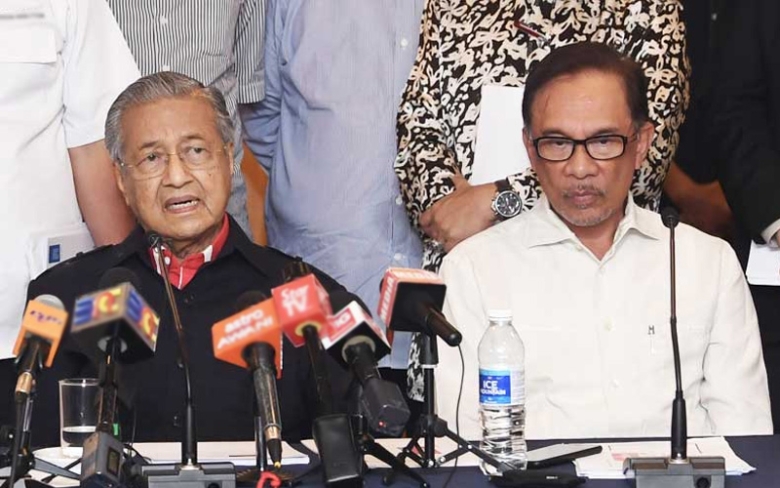
Prime Minister Dr Mahathir Mohamad and putative prime minister Anwar Ibrahim. Image: Bernama/FMT
The cancellation of visits to Australia by Malaysia’s putative next prime minister and its environment minister in the same week has only emphasised the sometimes underlying brittleness of an otherwise deep relationship. Putative prime minister Anwar Ibrahim pulled out of a high-profile speech at the Australian National University due to the sex scandal surrounding his potential rival for the top job Azmin Ali. Environment minister Yeo Bee Yin postponed a visit to discuss repatriating rare earths mineral waste to Australia after her West Australian counterpart said it would be a waste of time. They are quite different issues but underline how there can be upsets in the relationship that belie decades of two-way travel, strong education links and a military alliance. Australian officialdom would probably rather Anwar was in the top job than the mercurial Mahathir with his decades of needling Australia. And despite the deep personal ties between the two countries, rare earths company Lynas seems to have been poorly prepared for the green-tinged Pakatan Harapan to win last year’s election. The University of Tasmania’s James Chin told a Lowy Institute function that Mahathir was a “true nationalist” who is still driven by his old desire to turn the country into a developed state. And he has some cautious words for those expecting a smooth leadership transition saying Malaysians don’t share the western political concept of a leader in waiting and Anwar didn’t figure in the minds of Malay voters in the election. He predicted the Malaysian bureaucracy was so wedded to the old regime that not much would be achieved in the first term of the new government meaning real reform would need it to be re-elected. At least that might be good news for Lynas.
DEALS AND DOLLARS
STAR SHINES LESS BRIGHTLY
Star Entertainment Group is cutting 400 jobs after revealing that VIP spending in its casinos would fall almost by a third in the first half of this year. The company’s chief executive Matt Bekier said the lower spending reflected a lack of confidence from Asian players, including Chinese, who were still coming to Australia but not staying as long and were cutting the size of their bets.
ASIAN CEOS FALL SHORT
A survey of Australia’s top 100 listed company chief executives has found that only six are run by people with a non-European background raising questions about how ready corporate Australia is to benefit from Asian economic growth. The survey by BOSS magazine found two CEOs were born in India, one in Vietnam and one in Malaysia. By contrast 12 CEOs came from the United Kingdom and 10 from the United States.
INDIA STEELS UP
The Reserve Bank of Australia (RBA) has identified India as the country with the most potential to influence coking coal exports from Australia as China slows. The bank’s head of economic analysis Alexandra Heath told a mining conference that as India became the most populous country in the world by 2030, its demand for steel will also be boosted by an increase in urbanisation. She said there was also potential for a significant increase in the steel intensity of the Indian economy.
Upping the ante of Australian exports. Animation: Rocco Fazzari. View it here.
BANKING ON CHINA
Chinese banks now provide more credit to Australian business than North American banks in a little recognised growing Chinese economic role in the economy. The RBA says this lending has gone from nothing to about $35 billion in a bit more than a decade and is now similar to the amount of credit provided by European and Japanese banks. While Australia’s trade dependence on China is well known, the RBA says: “Chinese banks are now an important source of financing for many businesses in Australia, including, of course, Chinese companies with operations here.”
Read Neil Thomas’s essay on “economic bondage” for Asia Society Australia’s Disruptive Asia 2019 Special China Edition.
IAG INDIA SALE
Insurance company IAG has confirmed it is talking with potential buyers of part or all of its 26 per cent share of Indian general insurer SBI General. The statement followed speculation in the Indian Economic Times that six private equity funds are shortlisted to pick up IAG’s stake. “As advised at its 1H19 result…IAG continues to assess options for its joint venture interests in Asia, including its interest in SBI General,” IAG said.
DIPLOMATICALLY SPEAKING
“The US, being the preeminent power, has the most difficult adjustment to make. But however difficult the task, it is well worth the US forging a new understanding that will integrate China’s aspirations within the current system of rules and norms. New international rules need to be made in many areas, including trade and intellectual property, cybersecurity and social media. China will expect a say in this process, because it sees the present rules as having been created in the past without its participation. This is a reasonable expectation.” Singapore Prime Minister Lee Hsien Loong at the Shangri-La Dialogue
Richard McGregor, of the Lowy Institute, has an interesting read here on how Lee, now one of the region’s senior statesmen and about to retire, tried to navigate the minefield between the US and China.
DATAWATCH
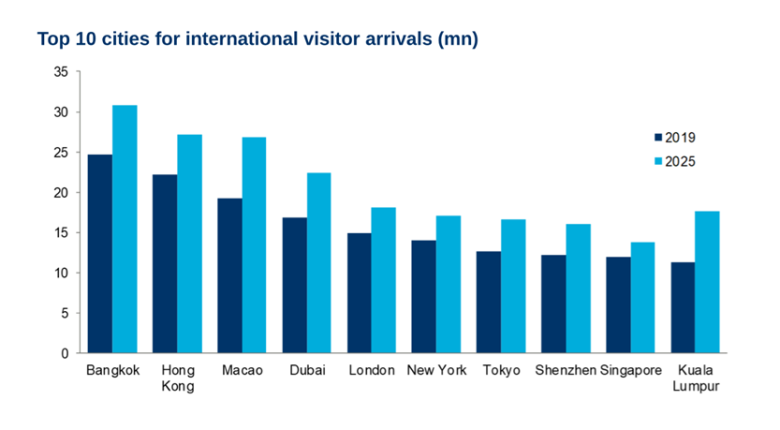
Source: Tourism Economics, an Oxford Economics company
Large Asian cities are amongst the most visited in the world with Kuala Lumpur and Guangzhou forecast to have the largest growth in overnight arrivals in the next six years amongst the top 25 cities. The Malaysian capital is forecast to overtake Singapore during that time.
WHAT WE'RE READING
THE BRI PUBLISHING RIVER RUNS DEEP
Does the BRI have legs? Animation: Rocco Fazzari. View it here.
NAVIGATING THE BELT AND ROAD INITIATIVE by DANIEL RUSSELL AND BLAKE BERGER (Asia Society Policy Institute);
INFRASTRUCTURE, IDEAS, AND STRATEGY IN THE INDO-PACIFIC edited by JOHN HEMMINGS (Henry Jackson Society);
WHAT SHOULD AUSTRALIA DO ABOUT THE BELT AND ROAD INITIATIVE by DIRK VAN DER KLEY (China Matters);
THE KUNMING-VIENTIANE RAILWAY by SCOTT MORRIS (Center for Global Development)
If there is one thing that can be agreed about China’s amorphous Belt and Road Initiative for regional infrastructure it is that it has been good for the thinktank publishing industry. Indeed, the BRI is big enough and vague enough to accommodate everything from detailed number crunching on iconic projects to sweeping strategic treatises with scarcely a number in sight. These four reports from the past few months reflect this diversity but also plug some important holes in the debate. In Navigating the Belt and Road Initiative Daniel Russel and Blake Berger correctly observe that even after five years “public discussion of the BRI still includes large doses of criticism, wishful thinking, pandering, and self-congratulatory propaganda.” But rather than just add to that doleful approach they have produced a comprehensive list of ideas for transparency and standardisation which would put the BRI on the path the Chinese-sponsored Asian Infrastructure Investment Bank has taken to grudging respectability. And these recommendations are built of a foundation that so many BRI critics choose to ignore: that the infrastructure building initiative is generally welcomed across the developing world for providing much needed finance. Whether China can take up these ideas when the opaque BRI process provides it with strategic flexibility, is perhaps doubtful. But the authors have persuaded themselves that some new directions announced at the April BRI summit appear to have reflected their recommendations. The London-based Henry Jackson Society’s contribution to this debate is a collection of essays by authors, including La Trobe University’s Euan Graham, about the emergence of the Indo-Pacific as a geo-political construct. It is notably funded by Taiwan which has its own existential interest in a regional construct which is not China-centered. The contributors generally see the Chinese infrastructure building as a geopolitical grab for power rather than filling a financing deficit, as the ASPI report accepts, or even finding markets for excess Chinese supply. This grand strategising about the BRI tends to overlook some immediate facts on the ground such as the way Malaysian Prime Minister Mahathir Mohamad pragmatically negotiated a one third reduction in the price of the Chinese-funded East Coast rail line without worrying about the geopolitics. Nevertheless, the essays draw out many different interpretations of what the Indo-Pacific amounts to, which leaves the idea looking almost as amorphous as the BRI. The Kunming to Vientiane rail line is not only a flagship BRI project from the Chinese perspective but also for those concerned about excess sovereign debt in borrowing countries. The ASPI study sees it as a classic example of a small country being unable to manage all the environmental and resettlement issues involved in a BRI project, let alone the financing. The Kunming-Vientiane Railway publication is a good example of what is now needed to make sense of how to deal with the BRI – a detailed study of the actual risks and what could have been done to minimise them for the future of Laos and credibility of the BRI. The Washington-based Center for Global Development produced one of the first detailed and balanced assessments of how much bad debt the BRI was creating around the world last year which unfortunately got lost in all the shadow boxing. Its railway study aligns closely with ASPI’s report in arguing that it is not too late for China to make changes which will make the project more viable for Laos and the BRI more attractive to other countries. Unfortunately for Laos, it doesn’t have a canny leader like Mahathir to make this work. Closer to home, Australia is moving from a stalemate about what to do about the BRI in a formal sense, to a more practical focus on helping our Pacific neighbours manage it. While this started out as muscling up to China over the telecommunications cable to Papua New Guinea, Prime Minister Scott Morrison seemed to be presenting himself more as an honest broker on his most recent trip to the Solomon Islands. Dirk van de Kley agrees, arguing in his China Matters Explores report: “It is in Australia’s national interest to contribute to the continued development of the region. That includes helping countries in the neighbourhood manage the challenges of the PRC.” He thinks a formal memorandum of understanding on the BRI as China wants, is not necessary unless China is actually offering something substantial. But he does have a very useful list of ways that Australia can contribute to some transparent, quality standards for technology and infrastructure construction across the region in collaboration with other countries which China may be drawn into.
ON THE HORIZON
ABE’S CHECKLIST
Fresh from successfully managing the Group of 20 nation summit in Osaka, Japan’s Prime Minister Shinzo Abe is set this month to win his last election on the path to becoming the country’s longest serving prime minister. Japanese voters will elect half the members of the House of Councillors (the upper house) on July 21, but willl not go to an early general election as had been speculated in recent months. Upper house elections are held every three years for members who get six year terms. Abe’s ruling Liberal Democrat Party (LDP) won a strong victory in 2013 when he was newly in power, but did less well 2016. Abe will underline his stature as arguably the world’s leading center right politician when he becomes Japan’s longest serving prime minister in November. But whether he can also secure a two thirds majority in the upper house at this election – which would help him pursue constitutional reforms to the country’s pacifist constitution – remains to be seen.
ABOUT BRIEFING MONTHLY
Briefing MONTHLY is a public update with news and original analysis on Asia and Australia-Asia relations. As Australia debates its future in Asia, and the Australian media footprint in Asia continues to shrink, it is an opportune time to offer Australians at the forefront of Australia’s engagement with Asia a professionally edited, succinct and authoritative curation of the most relevant content on Asia and Australia-Asia relations. Focused on business, geopolitics, education and culture, Briefing MONTHLY is distinctly Australian and internationalist, highlighting trends, deals, visits, stories and events in our region that matter.
Partner with us to help Briefing MONTHLY grow. Exclusive partnership opportunities are available. For more information please contact [email protected]
Read previous issues and subscribe >>

